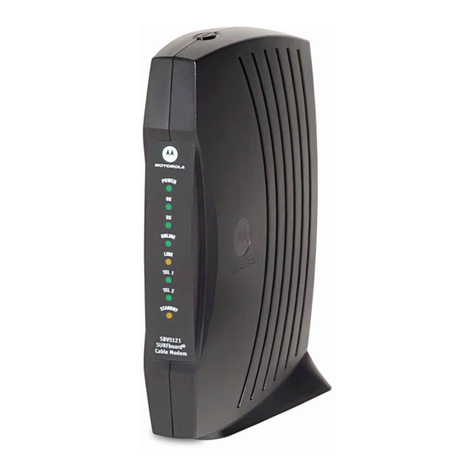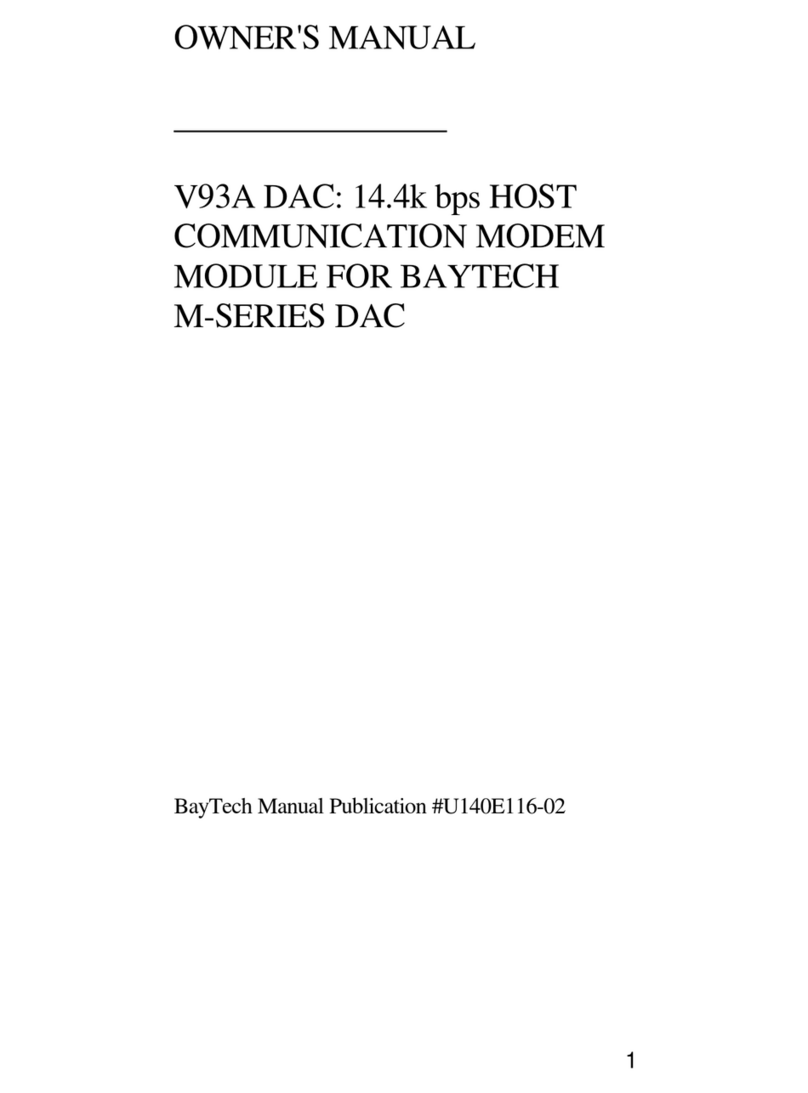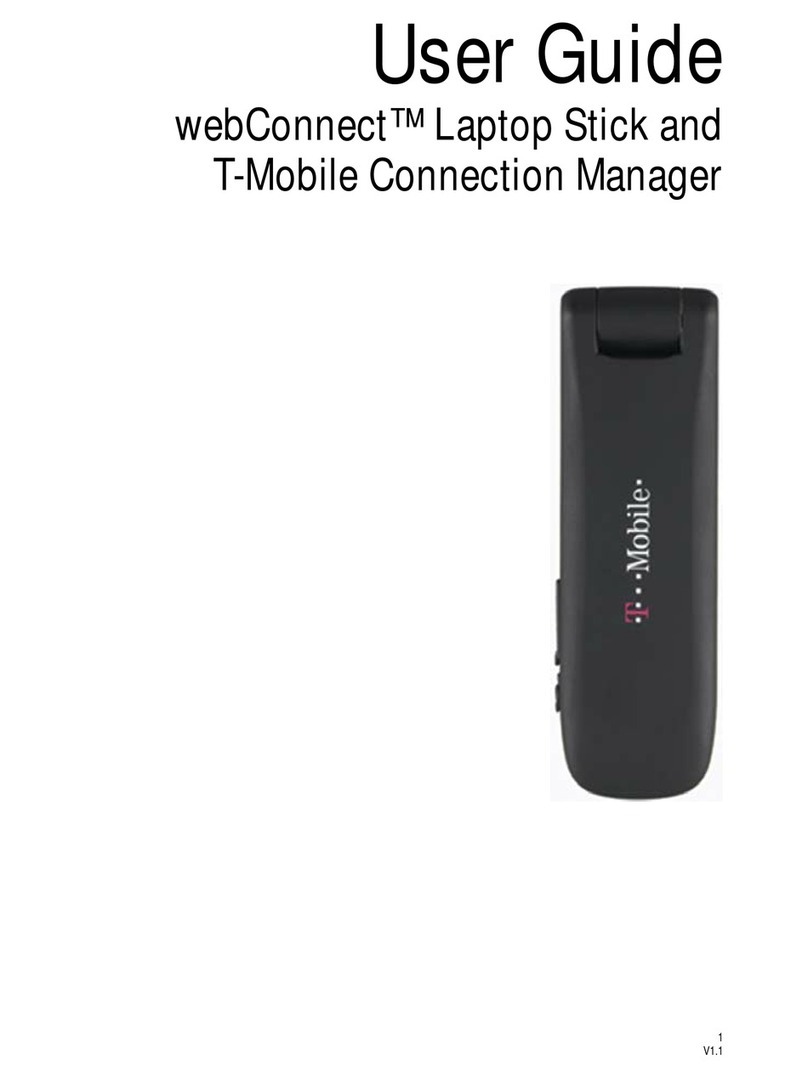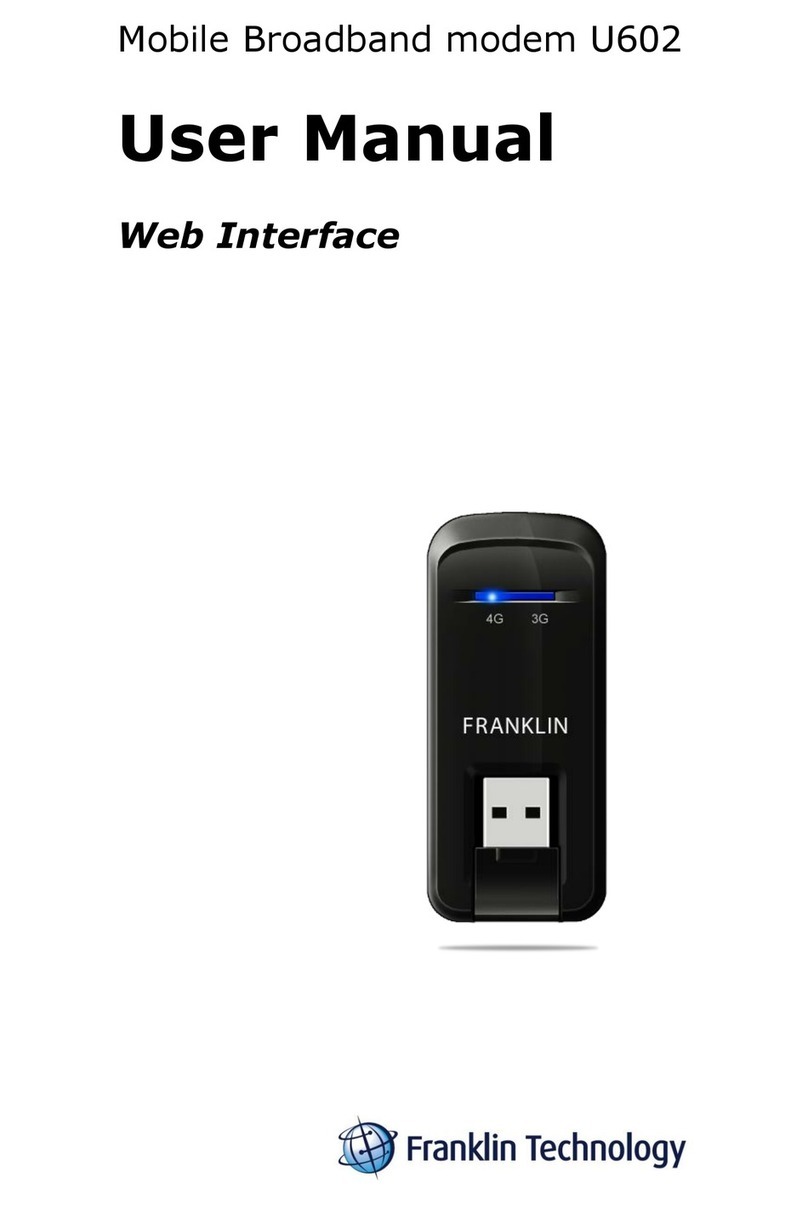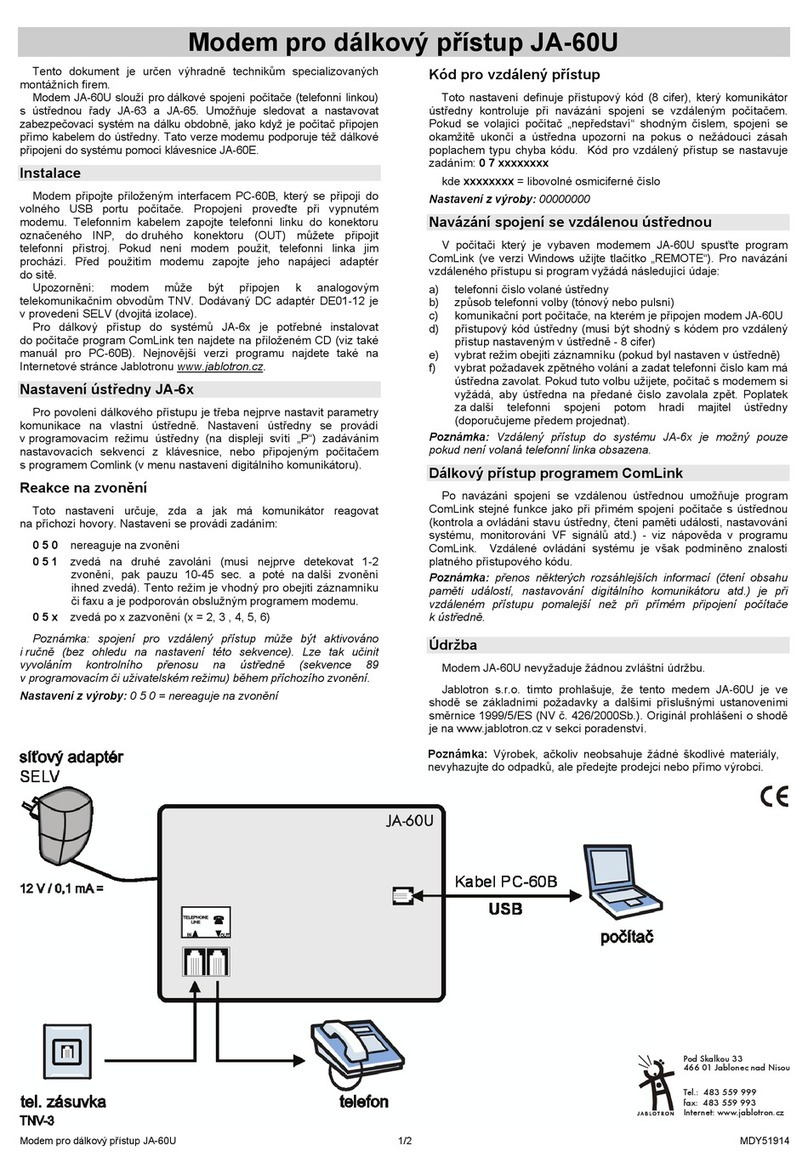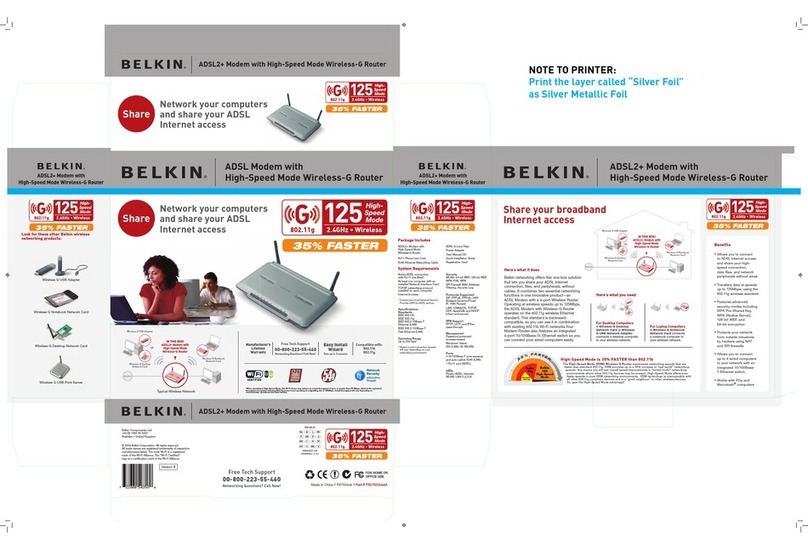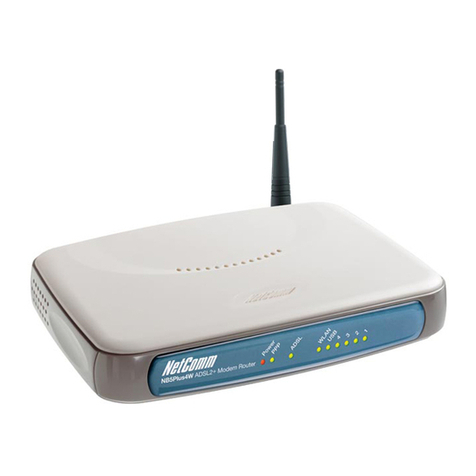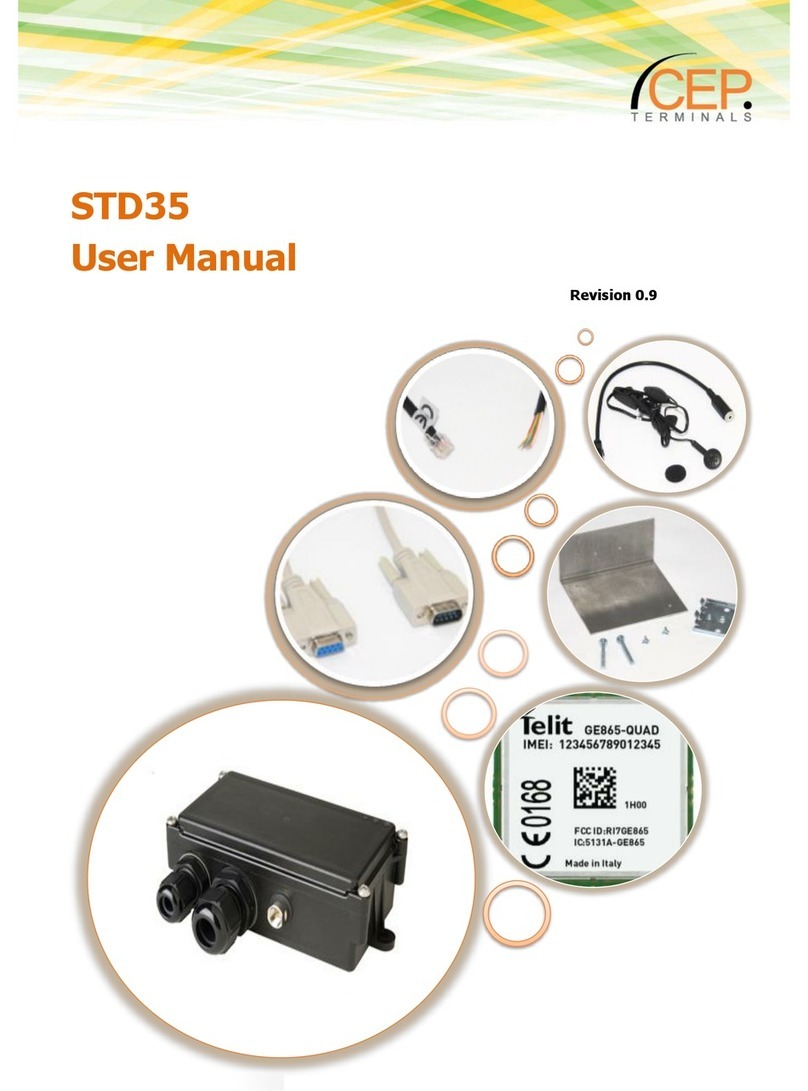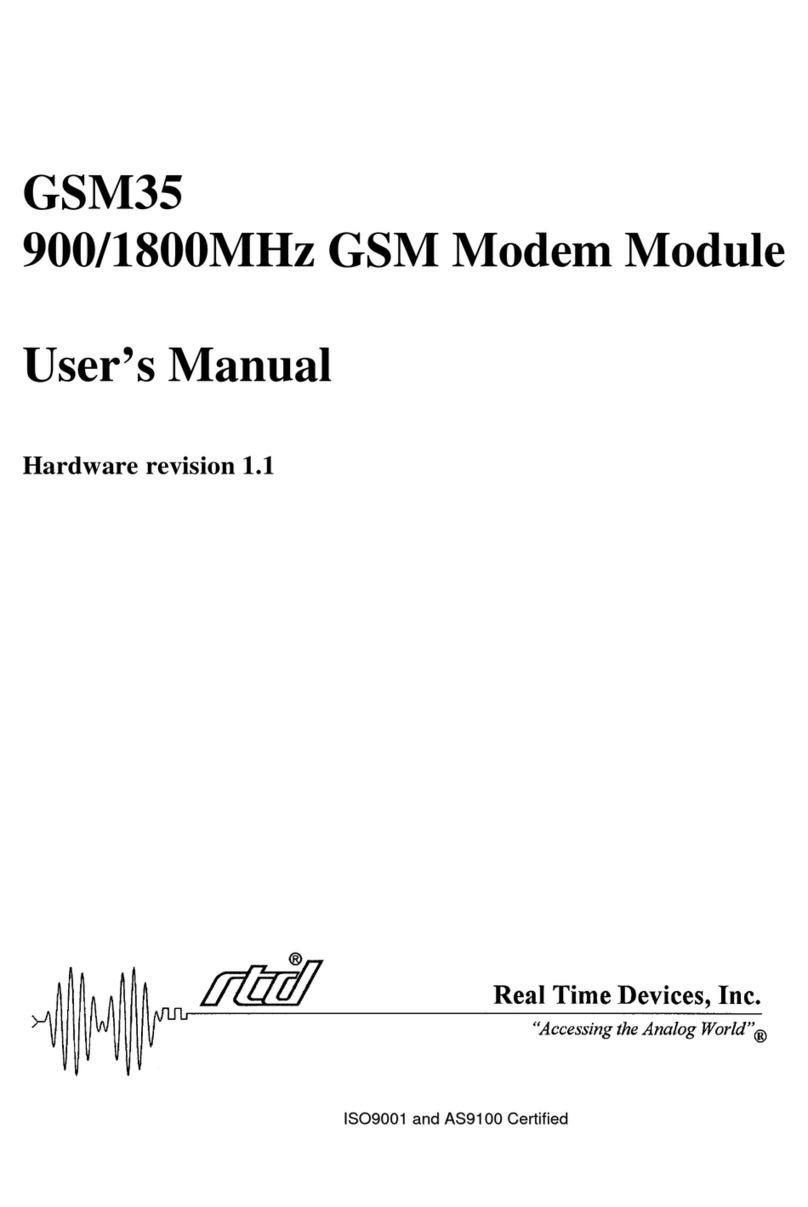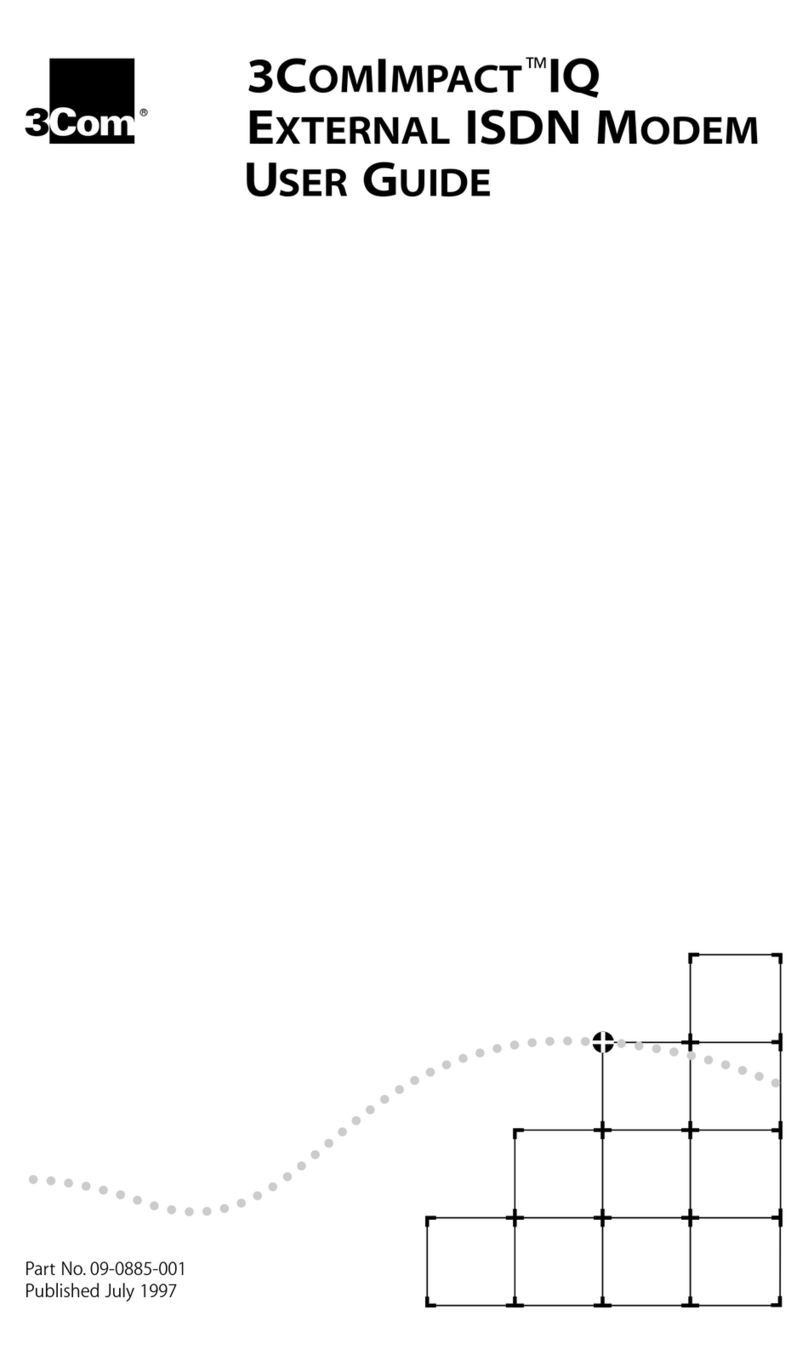FAX 9600 BPS Operator's manual

9600 BPS Faxmodem (250-3030) Command Summary Faxback Doc. # 5230
AT AND EXTENDED AT COMMAND SUMMARY
Dialing and Answering with the AT Commands Set:
This chapter describes your modem's command and communications modes and
the necessary guidelines needed to manually send commands to your modem. To
send commands to your modem, you must be running a communications program.
Because a full and complete explanation of each command would constitute a
small book, please refer to your manual for an in-depth explanation of
these commands.
Escape code: Switching from the Communications to the Command Mode
The escape code is the character sequence sent to your modem to switch it
from the communications mode to the command mode. When switching modes, the
modem does not disconnect from the phone line; It merely suspends the
transfer of information.
Wait at least 1 second without typing a character. Then type "+++" (without
the quotation marks.) Wait at least 1 second for the modem to acknowledge.
Your modem acknowledges by sending OK (or 0, if you turn off word result
codes).
The reason for the 1 second before and after wait sending the escape code is
to prevent accidentally switching modes. If you type anything within 1
second (the escape code guard time) of the escape code, your modem ignores
the escape code.
You can change the default values of the escape code and the escape code
guard time. The escape code is a single character you enter three times,
surrounded by a designated period of time.
Registers S2 and S12 hold the values for the escape code and guard time,
respectively. To change the default values, type "ATS2=X" or "ATS12=Y"
where "X" is the ASCII code for the character you want for the escape code
and "Y" represents the desired guard time in 1/50 second increments.
When you want to return to the Data Mode, type AT 0 or AT 01 and press the
Enter key. If you want to hang up, type ATH and press the Enter key.
IMPORTANT! Your FAX/MODEM also hangs up if the &D2 command is in effect and
it detects an ON-to-OFF transition on the Data Terminal Ready interchange
circuit.
Command Syntax:
This section describes the various elements that make up all modem commands.
Attention:
All commands must begin with the letters AT (short for "Attention") and
your modem uses these letters to automatically set the baud rate and the
parity. You can enter AT and all other commands in either upper or lower
case.

Line Length Limits:
You can type one or more commands after the AT. Your modem performs the
commands in the order given. The number of commands you can give at one time
is limited by the line length, which cannot exceed 33 characters. Your modem
does not count control characters and spaces, but it does count punctuation
marks such as dashes or commas. <ENTER> denotes a carriage return. This ends
the command; your modem does not process the command until it sees the
<ENTER>.
Line Editing:
After you enter a command (before you press <ENTER>) you can edit the
command using the backspace key to delete the last character you entered.
Note: If you backspace over a space, your modem ignores the space and erases
the next character. In this case, your computer does not display the command
properly.
Parameters:
Most commands consist of a single letter followed by a single-digit
parameter, or option. If you do not follow the command with a parameter,
the modem assumes a parameter of 0.
Example Command:
The following are two examples of valid modem commands.
AT X4 V1 DT (408) 555-3438 <ENTER>
ATX4V1DT4085553438 <ENTER>
Note that you do not need to enter any spaces. But, spaces make the command
easier to read (although, as noted above, harder to edit).
Command Results:
After you enter the command <ENTER>, your modem executes the command line
and returns a result code after every operation. Your modem can express this
result code as a word or a number. Also, you can select which result codes
your modem uses, and even turn result codes on and off. The V, X, and Q
commands control these options, and are discussed in further detail in the
fax/modem manual.
The ten result codes and their meanings are given in the chart below.
┌─────────┬───────────────┬────────────────────────────────────────────────┐
│Number │Word │Description │
├─────────┼───────────────┼────────────────────────────────────────────────┤
│0 │OK │The modem successfully processed the command(s)│
│1 │CONNECT │The modem detected a carrier at 300 baud │
│2 │RING │The phone is ringing. │
│3 │NO CARRIER │Carrier not detected within time limit, or │
│││carrier lost │
│4 │ERROR │The modem could not process the command line │
│││(entry error) │
│5 │CONNECT 1200 │The modem detected a carrier at 1200 baud │
│6 │NO DIALTONE │The modem could not detect a dial tone │

│7 │BUSY │Modem detected a busy signal │
│8 │NO ANSWER │Modem never detected a busy signal or carrier │
│9 │Not Used ││
│10 │CONNECT 2400 │The modem detected a carrier at 2400 baud. │
└─────────┴───────────────┴────────────────────────────────────────────────┘
TABLE 7-1 MNP/V.42/V.42bis COMMANDS
* Indicates default settings
┌───────┬──────────────────────────────────────────────────────────────────┐
│Command│Description │
├───────┼──────────────────────────────────────────────────────────────────┤
│+++ │Switch to Command Mode, but keep data connection. │
│A │Answer incoming call immediately. │
│A/ │Repeat last command line. │
│AT │ATtention characters. │
│B0 │Use CCITT standards. │
│B1 │* Use Bell standards. │
│C0 │Returns an ERROR response. │
│C1 │* Normal transmit carrier switching │
│Dn │Dial telephone number n. │
││Dial Modifiers: │
││L Redial the last telephone number dialed │
││* P pulse dialing │
││T touchtone dialing │
││W wait for dial ton │
││, pause (2 seconds) │
││@ wait for 5 seconds of silence │
││R dial an originate-only modem │
││; return to Command Mode after dialing │
││! go on-hook for .7 second │
││S=n dial one of four stored telephone numbers │
││^ turn on calling tone │
│E0 │Command characters not echoed. │
│E1 │* Command characters are echoed. │
│F0 │Returns an ERROR message. │
│F1 │* Turn off on-line data echo. │
│H0 │Force FAX/MODEM on-hook (hang up). │
│H1 │Force FAX/MODEM off-hook (busy). │
│I0 │FAX/MODEM sends 3-digit product code. │
│I1 │FAX/MODEM sends checksum on firmware ROM. │
│I2 │FAX/MODEM performs checksum. │
│I3 │FAX/MODEM sends firmware revision level. │
│I4 │FAX/MODEM reports on its capabilities. │
│L0 │Low speaker volume. │
│L1 │Low speaker volume. │
│L2 │* Medium speaker volume. │
│L3 │High speaker volume. │
│M0 │Speaker is always off. │
│M1 │* Speaker is on until carrier detected. │
│M2 │Speaker is always on. │
│M3 │Speaker on during answering. │
│N0 │Connections made at speed specified by Register S37. │
│N1 │* Handshaking permitted at any speed. │
│O0 │Return to data mode. │
│O1 │Return to data mode and initiate a retrain. │
│P │Set pulse dialing as default. │

│Q0 │* Send response to DTE. │
│Q1 │Do not send response to DTE. │
│Sr? │Read and display Register r value. │
│Sr=n │Set Register r to value n. │
│T │Set touchtone dialing as default. │
│V0 │Send numeric responses. │
│V1 │* Send word responses. │
│W0 │* Negotiation progress responses disabled. │
│W1 │Negotiation progress responses enabled. │
│W2 │Negotiation progress responses disabled. CONNECT message shows │
││DCE speed. │
│X0 │Responses 0-5/blind dialing/ignore dial tone and busy signal. │
│X1 │Responses 0-5 and 10/blind dialing. │
│X2 │Responses 0-6 and 10/dial tone selection. │
│X3 │Responses 0-5, 7, and 10/blind dialing/busy signal detection. │
│X4 │* All responses/dial tone and busy signal detection. │
│Y0 │* Long space disconnect disabled. │
│Y1 │Long space disconnect enabled. │
│Z0 │* Reset FAX/MODEM, use configuration profile 0. │
│Z1 │Reset FAX/MODEM, use configuration profile 1. │
├───────┼──────────────────────────────────────────────────────────────────┤
│&C0 │* Force Data Carrier Detect (DCD) ON continuously. │
│&C1 │DCD follows the remote carrier signal. │
│&D0 │Data Terminal Ready option, depends on the &Q command in effect.│
│&D1 ││
│&D2 ││
│&D3 ││
│&F │Load factory configuration profile from memory. │
│&G0 │* FAX/MODEM accepts this command, but takes no action. │
│&G1 │FAX/MODEM accepts this command, but takes no action. │
│&G2 │FAX/MODEM accepts this command, but takes no action. │
│&J0 │* RJ11 telephone jack. │
│&J1 │RJ12 or RJ13 telephone jack. │
│&K0 │Disable flow control. │
│&K1 │* Enable RTS/CTS flow control. │
│&K2 │Enable XON/XOFF flow control. │
│&K3 │Enable transparent ON/XOFF flow control. │
│&L0 │* Selects a dial-up telephone line. │
│&L1 │Selects a leased telephone line. │
│&M0 │Same as &Q0 through &Q3. │
│&M1 ││
│&M2 ││
│&M3 ││
│&P0 │* Make/break dial ratio of 39/61 @ 10 pps (USA). │
│&P1 │Make/break dial ratio of 33/67 @ 10 pps (UK & Hong Kong). │
│&P2 │Make/break ratio of 33/67 @ 20 pps (Japan). │
│&Q0 │Asynchronous operation in direct mode. │
│&Q1 │Synchronous Mode 1: Asynchronous dialing using AT commands, │
││switch to synchronous mode after dialing. │
│&Q2 │Synchronous Mode 2: Dial telephone number stored in position │
││number 0 when DTR goes from OFF to ON. │
│&Q3 │Synchronous Mode 3: Use handset to dial telephone number, enter │
││synchronous mode after DTR goes from OFF to ON. │
│&Q4 │Modem accepts this command but takes no action. │
│&Q5 │* FAX/MODEM negotiates an error-correction connection. │
│&Q6 │Asynchronous operation in normal mode (speed buffering). │
│&Q7 │FAX/MODEM accepts this command, but takes no action. │

│&Q8 │FAX/MODEM acts as if S48=128. │
│&Q9 │FAX/MODEM acts as if &Q5 is in effect with S48=7 and S46=138. │
│&R0 │* Clear To Send (CTS) tracts Request To Send (RTS). │
│&R1 │Ignore RTS, force CTS ON continuously. │
│&S0 │* Force Data Set Ready (DSR) ON continuously. │
│&S1 │DSR active during handshaking, off during testing or Command │
││mode. │
│&T0 │End test in progress. │
│&T1 │Start Local Analog Loopback Test. │
│&T3 │Start Local Digital Loopback Test. │
│&T4 │* Respond to remote modem requests for Remote Digital Loopback. │
│&T5 │Ignore remote modem requests for Remote Digital Loopback. │
│&T6 │Start Remote Digital Loopback Test. │
│&T7 │Start Remote Digital Loopback Test with Self-Test. │
│&T8 │Start Local Analog Loopback Test with Self-Test. │
│&V │View current profile, stored profiles, and stored numbers. │
│&W0 │Save active configuration as profile 0. │
│&W1 │Save active configuration as profile 1. │
│&X0 │* FAX/MODEM provides synchronous clock on EIA pin 15. │
│&X1 │FAX/MODEM accepts external synchronous clock on EIA pin 24 and │
││relays it on EIA pin 15. │
│&X2 │FAX/MODEM derives synchronous clock from incoming carrier signal│
││and relays it on EIA pin 15. │
│&Y0 │* Configuration 0 will be the active configuration profile after │
││FAX/MODEM is turned on. │
│&Y1 │Configuration 1 will be the active configuration profile after │
││FAX/MODEM is turned on. │
│&Zn=x │Store telephone number x in location n. │
├───────┼──────────────────────────────────────────────────────────────────┤
│\A0 │64-character maximum MNP block size. │
│\A1 │128-character maximum MNP block size. │
│\A2 │192-character maximum MNP block size. │
│\A3 │* 256-character maximum MNP block size. │
│\B │Transmit a line break to the remote modem. │
│%C0 │Disable data compression. │
│%C1 │* Enable data compression. │
│%D0 │V.42bis dictionary size 512. │
│%D1 │V.42bis dictionary size 1024. │
│%D2 │* V.42bis dictionary size 2048. │
│%D3 │V.42bis dictionary size 4096 for one-way compression, 2048 for │
││two-way compression. │
│\En │Optimize local echo. │
│%EO │FAX/MODEM will not retrain. │
│%E1 │* FAX/MODEM will retrain. │
│\G0 │* Turn off modem-to-modem flow control. │
│\G1 │Turn on modem-to-modem flow control. │
│\K │Defines break type. │
│\L0 │* Stream MNP link mode. │
│\L1 │Block MNP link mode. │
│%L │Report received signal level. │
│%M0 │Compression disabled. │
│%M1 │Transmit compression only. │
│%M2 │Receive compression only. │
│%M3 │* Two-way compression. │
│\N0 │Normal data link only with buffering. │
│\N1 │Normal data link only without buffering. │
│\N2 │Reliable link only. │

│\N3 │* Auto-reliable link. │
│\O │Originate reliable link control. │
│%P │Clear encoder dictionary. │
│%Q │Report line signal quality. │
│%Sn │Set maximum string length (V.42bis). │
│\T │Inactivity timer. │
│\U │Accept reliable link control. │
│\Y │Switch to reliable operation. │
│\Z │Switch to normal operation. │
└───────┴──────────────────────────────────────────────────────────────────┘
(dtc-07/30/93)
Table of contents
Popular Modem manuals by other brands
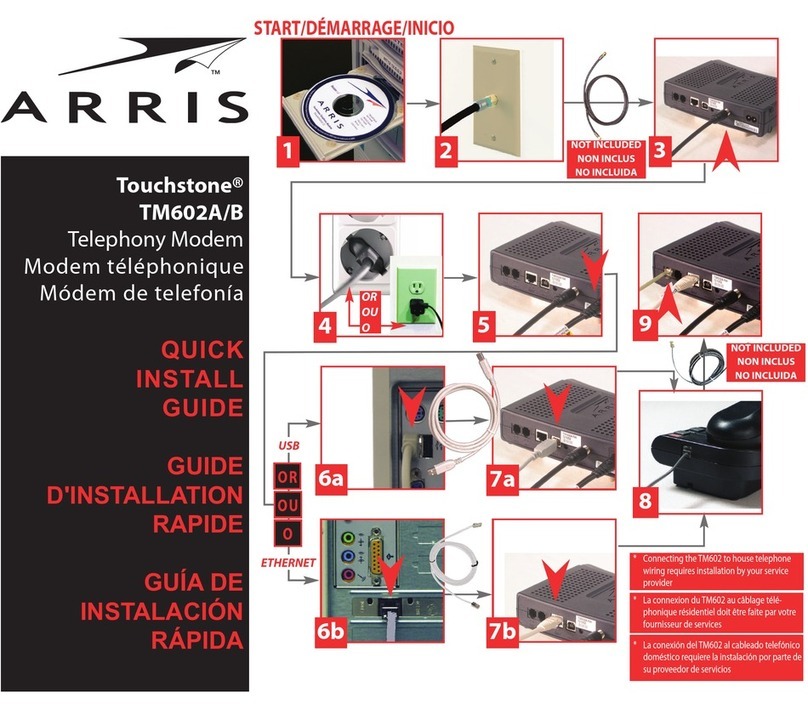
Arris
Arris Touchstone TM602A Quick install guide
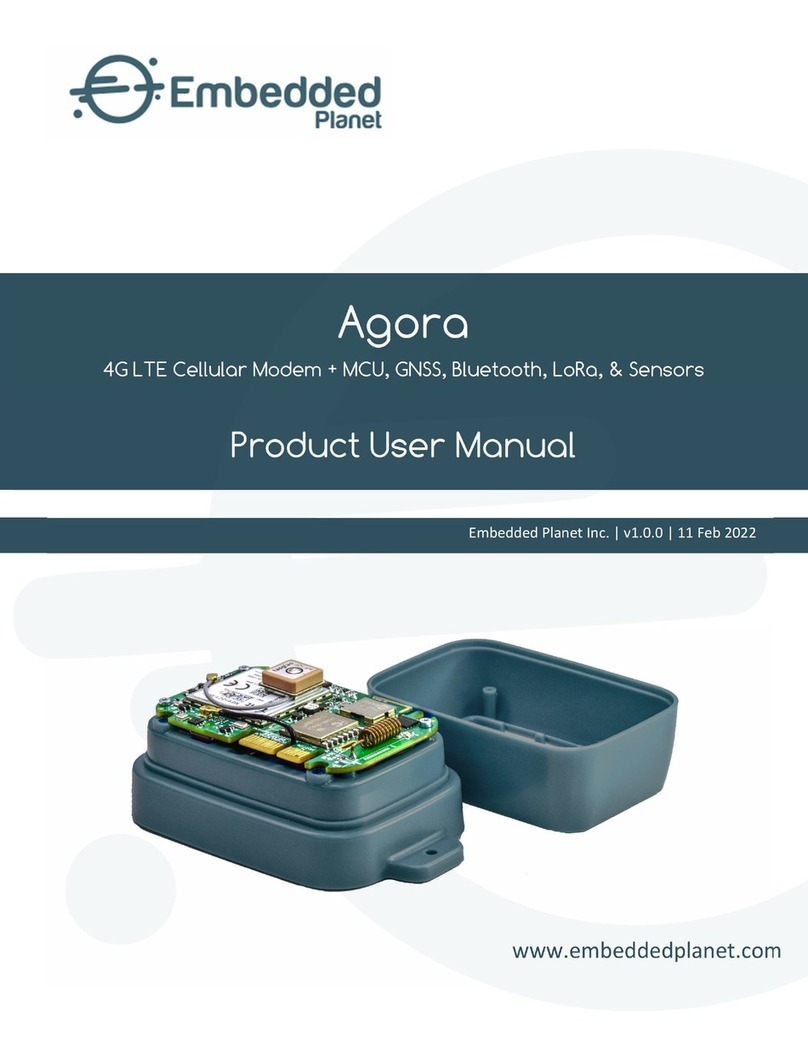
Embedded Planet
Embedded Planet Agora Product user manual

RACOM
RACOM PROFI MW160 operating manual
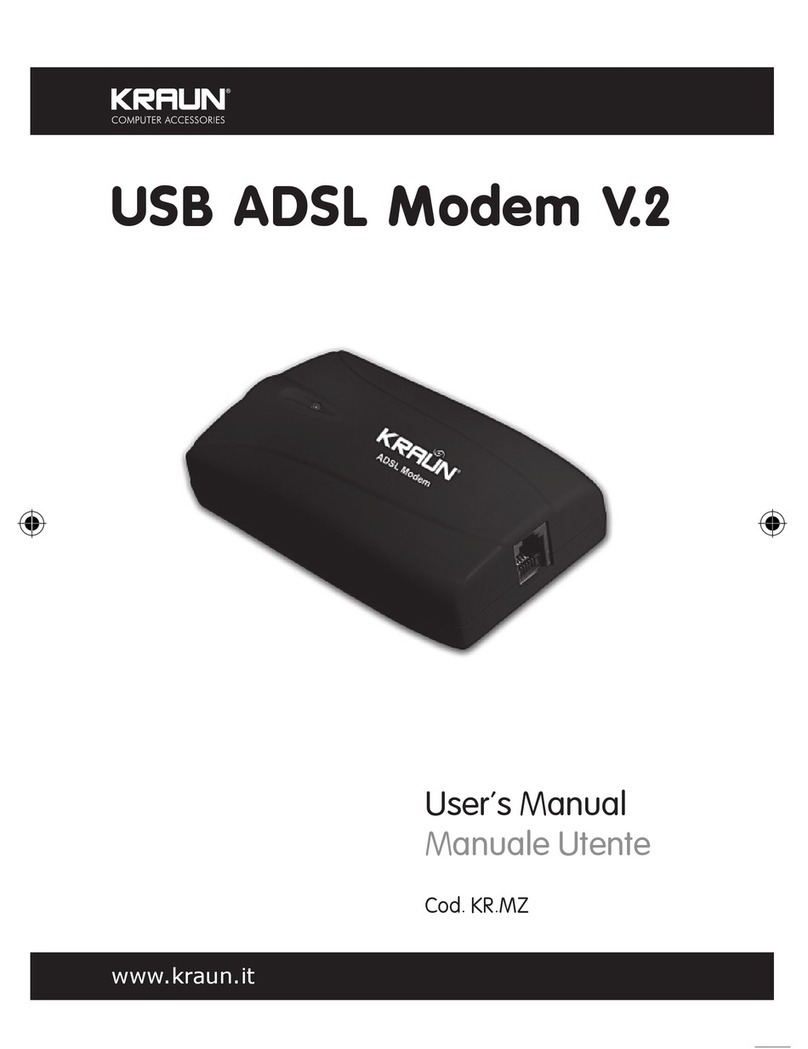
Kraun
Kraun KR.MZ user manual

FlexDSL
FlexDSL ORION 3 Technical description and operations manual

Sierra Wireless
Sierra Wireless AirCard 310U Quick start installation guide
